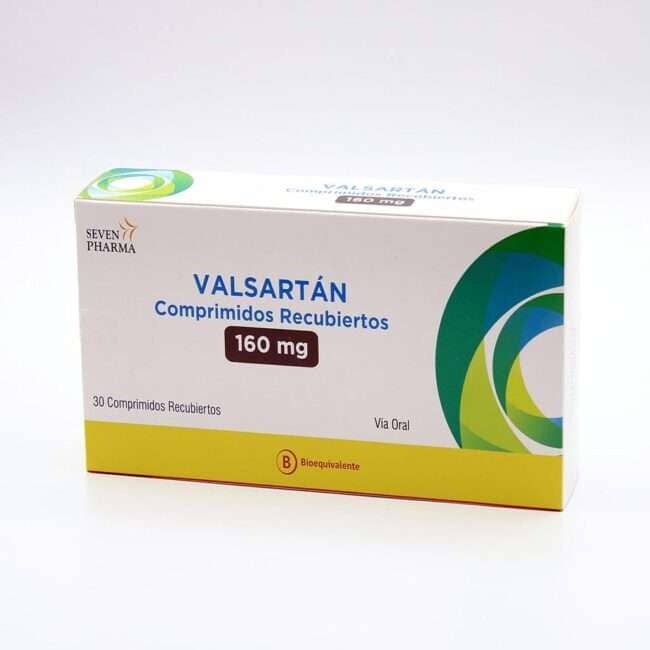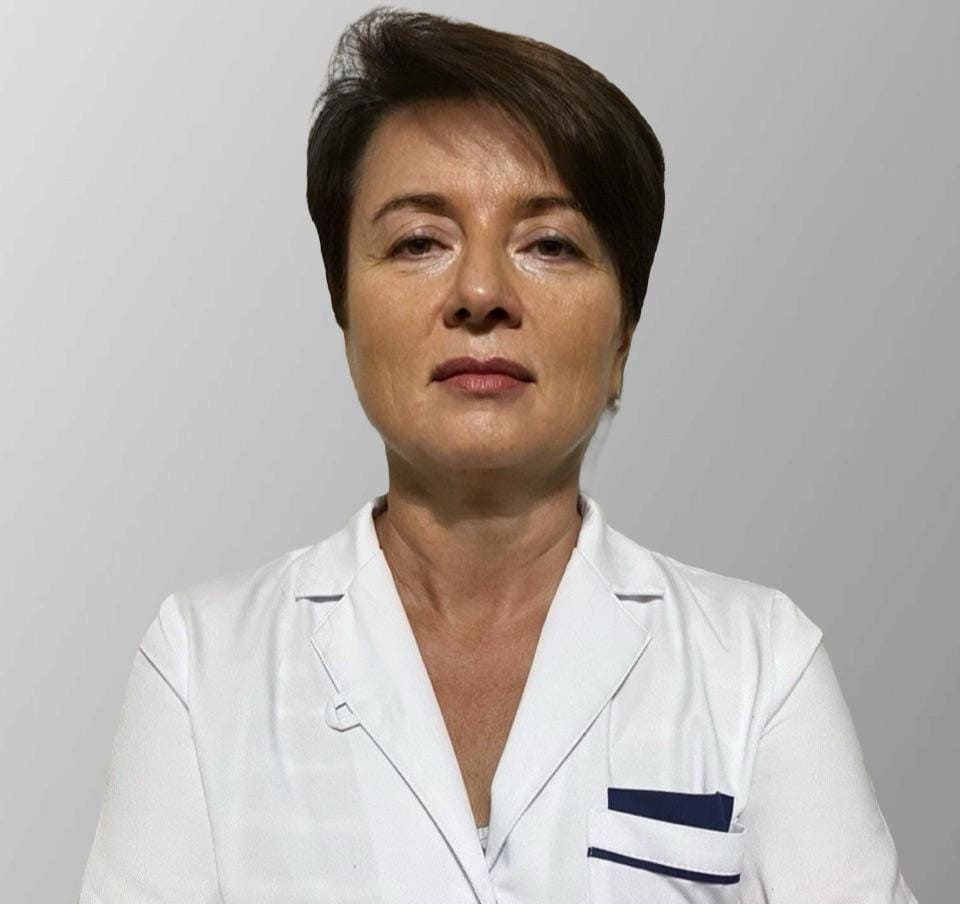

VALSARTAN TARBIS 160 mg FILM-COATED TABLETS

Ask a doctor about a prescription for VALSARTAN TARBIS 160 mg FILM-COATED TABLETS

How to use VALSARTAN TARBIS 160 mg FILM-COATED TABLETS
Introduction
PATIENT INFORMATION LEAFLET
Valsartan Tarbis 160 mg film-coated tablets EFG
Read all of this leaflet carefully before you start taking this medicine because it contains important information for you:
- Keep this leaflet, you may need to read it again.
- If you have any further questions, ask your doctor or pharmacist.
- This medicine has been prescribed for you only. Do not pass it on to others. It may harm them, even if their signs of illness are the same as yours.
- If you get any side effects, talk to your doctor or pharmacist. This includes any possible side effects not listed in this leaflet. See section 4.
Contents of the pack:
- What is Valsartan Tarbis and what is it used for.
- What you need to know before you take Valsartan Tarbis.
- How to take Valsartan Tarbis.
- Possible side effects.
- Storing Valsartan Tarbis.
- Pack contents and further information.
1. What is Valsartan Tarbis and what is it used for
Valsartan Tarbis belongs to a group of medicines known as angiotensin II receptor antagonists, which help to control high blood pressure. Angiotensin II is a substance in the body that causes blood vessels to narrow, leading to an increase in blood pressure. Valsartan Tarbis works by blocking the effect of angiotensin II. As a result, the blood vessels relax and blood pressure decreases.
Valsartan Tarbis can be used for three different conditions:
- To treat high blood pressure in adults and in children and adolescents from 6 to 18 years of age. High blood pressure increases the workload of the heart and arteries. If not treated, it can damage the blood vessels in the brain, heart, and kidneys, and may lead to a stroke, heart failure, or kidney failure. High blood pressure increases the risk of heart attacks. Lowering blood pressure to normal levels reduces the risk of developing these disorders.
- To treat adult patients after a recent heart attack (myocardial infarction). "Recent" means here between 12 hours and 10 days.
- To treat symptomatic heart failure in adult patients. Valsartan Tarbis is used when it is not possible to use a group of medicines called Angiotensin-Converting Enzyme Inhibitors (ACEIs) (a medication to treat heart failure), or it can be used in addition to ACEIs when it is not possible to use other medications for the treatment of heart failure. Symptoms of heart failure include shortness of breath and swelling of the feet and legs due to fluid retention. This is because the heart muscle cannot pump blood with enough force to supply the body with the blood it needs.
2. What you need to know before you take Valsartan Tarbis
Do not take Valsartan Tarbis
- if you are allergic(hypersensitive) to valsartan or any of the other ingredients of this medicine (listed in section 6).
- if you have severe liver disease
- if you are pregnant more than 3 months(it is also recommended to avoid Valsartan Tarbis during the first months of pregnancy; see section Pregnancy).
- If you have diabetes or kidney problems and are being treated with a medicine to reduce blood pressure that contains aliskiren
If any of the above applies to you, do not take Valsartan Tarbis.
Warnings and precautions
Be particularly cautious with Valsartan Tarbis
- if you have liver disease.
- if you have severe kidney disease or are undergoing dialysis.
- if you have narrowing of the kidney artery.
- if you have recently undergone a kidney transplant (received a new kidney).
- if you are being treated for a heart attack or heart failure, your doctor may check your kidney function.
- if you have severe heart disease other than heart failure or heart attack.
- if you have experienced swelling of the tongue and face caused by an allergic reaction called angioedema when taking other medicines (including ACEIs), inform your doctor. If you have these symptoms when taking Valsartan Tarbis, stop taking it immediately and never take it again. See also section 4 "Possible side effects".
- if you are taking medicines that increase the amount of potassium in the blood. These include potassium supplements or salt substitutes that contain potassium, potassium-sparing medicines, and heparin. It may be necessary to regularly check the amount of potassium in the blood.
- if you are under 18 years of age and take Valsartan Tarbis in combination with other medicines that inhibit the renin-angiotensin-aldosterone system (medicines that lower blood pressure), your doctor may regularly check your kidney function and the amount of potassium in the blood.
- if you have aldosteronism, a disease in which the adrenal glands produce too much aldosterone hormone. In this case, it is not recommended to take Valsartan Tarbis.
- if you have lost a lot of fluid (dehydration) due to diarrhea, vomiting, or high doses of diuretics (medicines to increase urine production).
- you must inform your doctor if you think you are (or might become) pregnant. It is not recommended to use Valsartan Tarbis at the start of pregnancy, and it should not be taken if you are pregnant for more than 3 months, as it may cause serious harm to your baby if used during this period (see section Pregnancy).
- if you are taking any of the following medicines used to treat high blood pressure:
- an Angiotensin-Converting Enzyme Inhibitor (ACEI) (e.g., enalapril, lisinopril, ramipril), especially if you have kidney problems related to diabetes.
- Aliskiren
- if you are being treated with an ACEI along with other specific medicines for the treatment of your heart failure, known as mineralocorticoid receptor antagonists (MRAs) (e.g., spironolactone, eplerenone) or beta-blockers (e.g., metoprolol).
If any of the above applies to you, inform your doctor before taking Valsartan Tarbis.
Your doctor may check your kidney function, blood pressure, and blood electrolyte levels (e.g., potassium) at regular intervals.
See also the information under the heading "Do not take Valsartan Tarbis."
Using Valsartan Tarbis with other medicines
Tell your doctor or pharmacist if you are taking, have recently taken, or might take any other medicines.
The effect of treatment with Valsartan Tarbis may be altered if taken with certain medicines. It may be necessary to change the dose, take other precautions, or, in some cases, stop treatment with one of the medicines. This applies to both prescription and non-prescription medicines, especially:
- other medicines that lower blood pressure, especially diuretics(medicines to increase urine production), ACEIs (such as enalapril, lisinopril, etc.), or aliskiren.
- medicines that increase the amount of potassium in the blood. These include potassium supplements or salt substitutes that contain potassium, potassium-sparing medicines, and heparin.
- certain pain-relieving medicines called non-steroidal anti-inflammatory drugs (NSAIDs).
- some antibiotics (of the rifampicin group), a medicine used to protect against rejection in a transplant (cyclosporin), or an antiretroviral medicine used to treat HIV/AIDS (ritonavir). These medicines may increase the effect of Valsartan Tarbis.
- lithium, a medicine used to treat certain types of psychiatric diseases.
- if you are taking an Angiotensin-Converting Enzyme Inhibitor (ACEI) or aliskiren (see also the information under the headings "Do not take Valsartan Tarbis" and "Warnings and precautions").
- If you are being treated with an ACEI along with other specific medicines for the treatment of your heart failure, known as mineralocorticoid receptor antagonists (MRAs) (e.g., spironolactone, eplerenone) or beta-blockers (e.g., metoprolol).
Additionally:
- if you are being treated after a heart attack, it is not recommended to combine with ACE inhibitors(a medication to treat a heart attack)
- if you are being treated for heart failure, it is not recommended to combine with ACE inhibitors and beta-blockers(a medication to treat a heart attack).
Taking Valsartan Tarbis with food and drink
You can take Valsartan Tarbis with or without food.
Pregnancy and breastfeeding
If you are pregnant or breastfeeding, think you may be pregnant, or are planning to have a baby, ask your doctor or pharmacist for advice before taking this medicine.
- You must tell your doctor if you think you are pregnant or might become pregnant.Your doctor will normally advise you to stop taking Valsartan Tarbis before you become pregnant or as soon as you know you are pregnant, and will advise you to take another medicine instead of Valsartan Tarbis. It is not recommended to use Valsartan Tarbis at the start of pregnancy, and it should not be taken if you are pregnant for more than 3 months, as it may cause serious harm to your baby if used during this period.
- Tell your doctor if you are breastfeeding or about to start breastfeeding.It is not recommended to use Valsartan Tarbis in breastfeeding mothers, and your doctor may choose another treatment for you if you want to breastfeed, especially if your baby is newborn or was born prematurely.
Driving and using machines
Before driving a vehicle, using tools, or operating machinery, or carrying out other activities that require concentration, make sure you know how Valsartan Tarbis affects you. Like many other medicines used to treat high blood pressure, Valsartan Tarbis can cause, in rare cases, dizziness and affect your ability to concentrate.
3. How to take Valsartan Tarbis
To get the best results and reduce the risk of side effects, always take Valsartan Tarbis exactly as your doctor tells you. If you are unsure about anything, ask your doctor or pharmacist. People with high blood pressure often do not notice any signs of the disease; many feel normal. This makes it very important to keep your appointments with your doctor, even if you feel well.
Adult patients with high blood pressure:
The usual dose is 80 mg once daily. In some cases, your doctor may prescribe higher doses (e.g., 160 mg or 320 mg). Valsartan Tarbis can also be taken in combination with another medicine (e.g., a diuretic).
Use in children and adolescents (6 to 18 years of age) with high blood pressure:
In patients who weigh less than 35 kg, the recommended dose is 40 mg of valsartan once daily.
In patients who weigh 35 kg or more, the recommended starting dose is 80 mg of valsartan once daily.
In some cases, your doctor may prescribe higher doses (the dose can be increased to 160 mg and up to a maximum of 320 mg).
Adult patients after a recent heart attack:
Treatment is usually started at 12 hours, normally with a low dose of 20 mg, given twice daily. The 20 mg dose is obtained by dividing the 40 mg tablet. Your doctor will gradually increase this dose over several weeks to a maximum of 160 mg twice daily. The final dose will depend on your individual tolerance.
Valsartan Tarbis can be given with other treatments for heart attack, and your doctor will decide which treatment is suitable for you.
Adult patients with heart failure:
Treatment is usually started with 40 mg twice daily. Your doctor will gradually increase the dose over several weeks to a maximum of 160 mg twice daily. The final dose will depend on your individual tolerance.
Valsartan Tarbis can be given with other treatments for heart failure, and your doctor will decide which treatment is suitable for you.
You can take Valsartan Tarbis with or without food. Swallow Valsartan Tarbis with a glass of water.
Take Valsartan Tarbis at approximately the same time each day.
If you take more Valsartan Tarbis than you should
If you notice severe dizziness and/or fainting, contact your doctor immediately and lie down. If you have accidentally taken too many tablets, contact your doctor, pharmacist, or call the Toxicology Information Service, telephone 91-562 04 20, stating the medicine and the amount taken.
If you forget to take Valsartan Tarbis
If you forget to take a dose, take it as soon as you remember. However, if it is almost time for your next dose, skip the missed dose.
Do not take a double dose to make up for forgotten doses.
If you stop taking Valsartan Tarbis
If you stop taking your treatment with Valsartan Tarbis, your disease may worsen. Do not stop taking the medicine unless your doctor tells you to.
If you have any further questions on the use of this product, ask your doctor or pharmacist.
4. Possible side effects
Like all medicines, this medicine can cause side effects, although not everybody gets them.
These side effects may occur with certain frequencies, which are defined below:
- very common: may affect more than 1 in 10 people
- common: may affect up to 1 in 10 people
- uncommon: may affect up to 1 in 100 people
- rare: may affect up to 1 in 1,000 people
- very rare: may affect up to 1 in 10,000 people
- frequency not known: frequency cannot be estimated from the available data
Some symptoms that require immediate medical attention:
You may experience symptoms of angioedema (a specific allergic reaction), such as
- swelling of the face, lips, tongue, or throat
- difficulty breathing or swallowing
- hives, itching
If you experience any of these symptoms, stop taking Valsartan Tarbis and contact your doctor immediately (see also section 2 "Be particularly cautious with Valsartan Tarbis")
Side effects include:
Common
- dizziness
- low blood pressure with or without symptoms such as dizziness, and fainting when standing up
- reduced kidney function (signs of kidney impairment).
Uncommon
- angioedema (section "Some symptoms that require immediate medical attention")
- sudden loss of consciousness (syncope)
- feeling of spinning (vertigo)
- marked reduction in kidney function (signs of acute kidney failure)
- muscle spasms, abnormal heart rhythm (signs of hyperkalemia)
- shortness of breath, difficulty breathing when lying down, swelling of the feet or legs (signs of heart failure)
- headache
- cough
- abdominal pain
- nausea
- diarrhea
- fatigue
- weakness
Frequency not known
- blistering of the skin (sign of bullous dermatitis)
- allergic reactions with skin rash, itching, and hives; symptoms of fever, swelling, and pain in the joints, muscle pain, swelling of the lymph nodes, and/or symptoms similar to those of the flu (signs of serum sickness)
- red purple spots, fever, itching (signs of inflammation of the blood vessels, also called vasculitis)
- bleeding or bruising more often than usual (signs of thrombocytopenia)
- muscle pain (myalgia)
- fever, sore throat, or mouth ulcers due to infections (symptoms of low white blood cell count, also called neutropenia)
- reduction in hemoglobin and reduction in the percentage of red blood cells in the blood (which, in severe cases, can lead to anemia)
- increase in blood potassium levels (which, in severe cases, can lead to muscle spasms and abnormal heart rhythm)
- increase in liver function values (which may indicate liver damage), including an increase in bilirubin levels in the blood (which, in severe cases, can cause the skin and eyes to turn yellow)
- increase in blood urea nitrogen and increase in serum creatinine levels (which may indicate kidney function abnormalities)
- low sodium levels in the blood (which, in severe cases, can cause fatigue, confusion, muscle twitching, and/or convulsions)
The frequency of some side effects may vary depending on your condition. For example, certain side effects such as dizziness and reduced kidney function were observed less frequently in adult patients treated for high blood pressure than in adult patients treated for heart failure and after a recent heart attack.
Side effects in children and adolescents are similar to those observed in adults.
If you experience any side effect that you think is serious or if you notice any side effect not listed in this leaflet, tell your doctor or pharmacist.
Reporting of side effects
If you experience any side effects, talk to your doctor or pharmacist. This includes any possible side effects not listed in this leaflet. You can also report side effects directly via the Spanish Pharmacovigilance System for Human Use Medicines: https://www.notificaram.es By reporting side effects, you can help provide more information on the safety of this medicine.
5. Storage of Valsartán Tarbis
Keep this medication out of sight and reach of children.
Do not use this medication after the expiration date that appears on the packaging after Cad. The expiration date is the last day of the month indicated.
Do not store at a temperature above 30°C. Store in the original packaging to protect it from light.
Do not use this medication if you notice that the packaging is damaged or shows signs of tampering.
Medicines should not be thrown down the drain or into the trash. Deposit the packaging and medications you no longer need at the SIGRE point in the pharmacy. If in doubt, ask your pharmacist how to dispose of the packaging and medications you no longer need. This will help protect the environment.
6. Content and Additional Information
Composition of Valsartán Tarbis
The active ingredient is valsartan. Each film-coated tablet contains 160 mg of valsartan.
The other components are: microcrystalline cellulose, powdered cellulose, crospovidone, and magnesium stearate. The tablet coating contains hypromellose, titanium dioxide (E171), Macrogol 8000, red iron oxide (E172), yellow iron oxide (E172), and black iron oxide (E172).
Appearance of the Product and Packaging Content
Valsartán Tarbis 160 mg film-coated tablets are film-coated, orange-yellow, oblong, and scored on one side.
They are available in packages of 14, 28, 30, 56, and 90 film-coated tablets.
Only some package sizes may be marketed.
Marketing Authorization Holder and Manufacturer
Marketing Authorization Holder:
Tarbis Farma, S.L.
Gran Vía Carlos III, 94
08028 Barcelona (Spain)
Manufacturer:
Laboratorios Lesvi, S.L.
Avda. Barcelona, 69
08970 Sant Joan Despí
Barcelona - Spain
This medication is authorized in the member states of the European Economic Area under the following names:
Portugal: Valsartan Qualigen
Spain: Valsartán Tarbis 160 mg film-coated tablets EFG
Date of the last revision of this prospectus: November 2015
Detailed and updated information on this medication is available on the website of the Spanish Agency for Medicines and Health Products (AEMPS) http://www.aemps.gob.es/.
.

How much does VALSARTAN TARBIS 160 mg FILM-COATED TABLETS cost in Spain ( 2026)?
The average price of VALSARTAN TARBIS 160 mg FILM-COATED TABLETS in January, 2026 is around 16.3 EUR. Prices may vary depending on the region, pharmacy, and whether a prescription is required. Always check with a local pharmacy or online source for the most accurate information.
- Country of registration
- Average pharmacy price16.3 EUR
- Active substance
- Prescription requiredYes
- Manufacturer
- This information is for reference only and does not constitute medical advice. Always consult a licensed doctor before taking any medication. Oladoctor is not responsible for medical decisions based on this content.
- Alternatives to VALSARTAN TARBIS 160 mg FILM-COATED TABLETSDosage form: TABLET, 160 mg valsartanActive substance: valsartanManufacturer: Novartis Farmaceutica S.A.Prescription requiredDosage form: TABLET, 320 mgActive substance: valsartanManufacturer: Novartis Farmaceutica S.A.Prescription requiredDosage form: ORAL SOLUTION/SUSPENSION, 3 mg/mlActive substance: valsartanManufacturer: Novartis Farmaceutica S.A.Prescription required
Alternatives to VALSARTAN TARBIS 160 mg FILM-COATED TABLETS in other countries
The best alternatives with the same active ingredient and therapeutic effect.
Alternative to VALSARTAN TARBIS 160 mg FILM-COATED TABLETS in Poland
Alternative to VALSARTAN TARBIS 160 mg FILM-COATED TABLETS in Ukraine
Online doctors for VALSARTAN TARBIS 160 mg FILM-COATED TABLETS
Discuss dosage, side effects, interactions, contraindications, and prescription renewal for VALSARTAN TARBIS 160 mg FILM-COATED TABLETS – subject to medical assessment and local rules.









